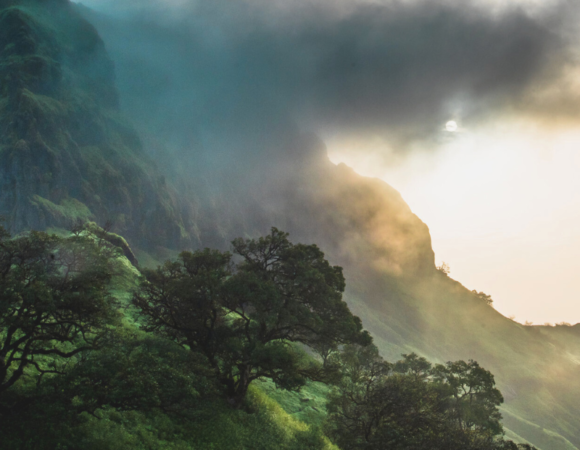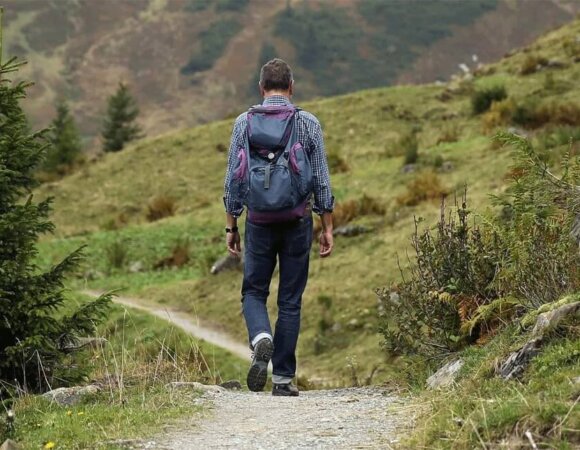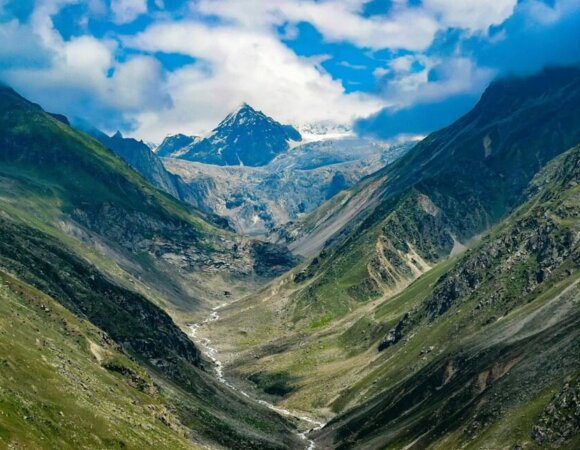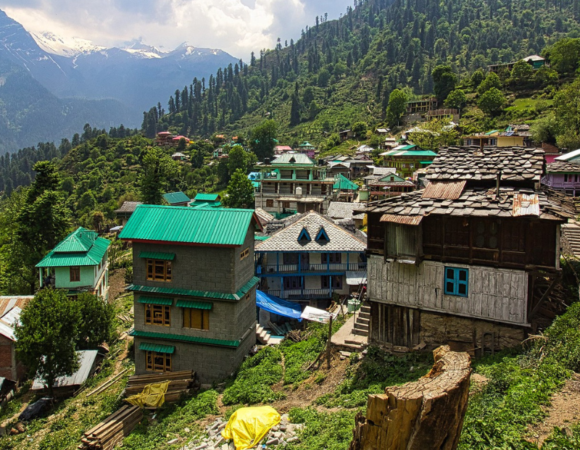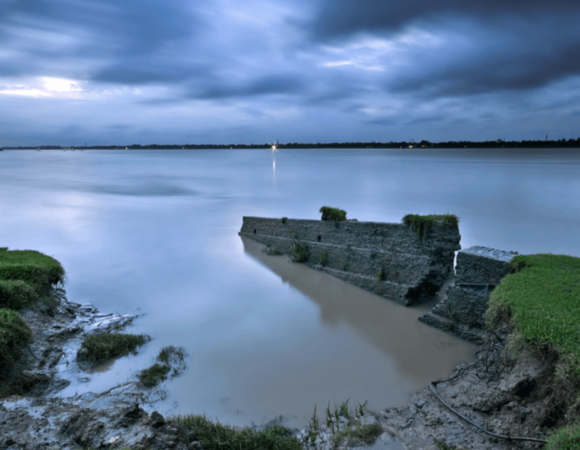Delhi to Bandhavgarh Forest : Distance, Places to Visit, Connectivity & FAQ’s
When mapping out your wildlife adventure, consider the allure of Delhi to Bandhavgarh Forest—it stands out as an excellent choice for an unforgettable experience. Start you drive Delhi to Bandhavgarh forest Distance and experience the wildlife energy at its best.
Table of Contents
Toggle
Bandhavgarh National Park, nestled in the Vindhya Hills of Madhya Pradesh, India, is a haven for wildlife enthusiasts. It boasts the highest density of Royal Bengal tigers in the country, making it a prime spot for tiger spotting. The park also shelters diverse flora and fauna, including leopards, sloth bears, gaur, and over 250 species of birds.

Visitors can explore the park on jeep safaris, offering breathtaking views and unforgettable encounters with nature. Beyond wildlife, Bandhavgarh holds historical significance. The park is home to the ancient Bandhavgarh Fort, perched atop a 800-meter hill, offering panoramic views of the surrounding landscape. Whether you’re a wildlife enthusiast, a history buff, or simply seeking an escape into nature, Bandhavgarh National Park promises an unforgettable experience.
About Delhi
Delhi is the capital of India and one of the most busy cities in the world. Delhi’s history is a captivating tale of centuries past. From its ancient roots as Indraprastha mentioned in the Mahabharata to its prominence as the capital of the mighty Mughal Empire, the city has witnessed the rise and fall of dynasties. The grandeur of the Mughal era is still evident in iconic structures like the Taj Mahal and the Red Fort. Under British rule, Delhi’s landscape transformed, and the city became the symbol of India’s struggle for independence.

Delhi is a city where ancient heritage buildings and modern skyscrapers coexist side by side. It is the home of a rich history and heritage. The Red Fort, the Jama Masjid, and the Akshardham Temple are the main attractions of the capital of the country. Visitors can explore the bustling streets of Chandni Chowk, pay homage at Raj Ghat, and experience the spiritual aura of Jama Masjid. Delhi is also a major economic and transportation hub, and it is well-connected by air, rail, and road.
Delhi is a city that beautifully blends the old and the new. Delhi’s vibrant culture and historical significance make it a must-visit destination for travelers. From its Mughal heritage to its bustling markets, Delhi offers a diverse and enriching experience for all.
About Bandhavgarh Forest
Bandhavgarh National Park is a tiger reserve located in the Umaria district of Madhya Pradesh, India. It is one of the best places in India to see tigers in the wild. The park is home to a variety of other wildlife, including leopards, sloth bears, and wild boars. The park is open for tourism from October to June. The best time to visit is during the dry season, from November to March, when the weather is pleasant and the tigers are more active.

There are a number of ways to explore the park, including jeep safaris, elephant rides, and nature walks. There are also a number of lodges and hotels located inside the park, so you can stay overnight and enjoy the peace and quiet of the jungle. If you are interested in visiting Bandhavgarh National Park, I recommend booking your trip in advance, as the park can get very crowded during peak season. You can also contact the park authorities for more information about permits and fees.
Key Points of Bandhavgarh Forest
| Area | 448 sq. Kms |
| Established | In 1968, Became a UNESCO World Heritage site in 2008. |
| Best Season | The best time is from November to February, during the dry season, when the weather is pleasant, and wildlife, including tigers, is more active. |
| Weather | In summer the temperature can rise up to 35°C to 40°C, but in autumn and winter, it ranges between 15°C to 20°C. |
Highlights In Bandhavgarh Forest
- Badi Gufa: This cave complex houses ancient rock paintings and sculptures dating back to the 8th-9th centuries. The intricate carvings depict scenes from Hindu mythology and provide a glimpse into the region’s rich cultural heritage.

- Three Cave Point: This scenic spot offers breathtaking views of the park, especially at sunrise and sunset. You can also spot various wildlife species like deer, gaur, and monkeys from here.
- Sheesh Shaiya: This natural rock formation resembles a reclining figure and is considered a sacred site. The shimmering reflection of the sun on the rock surface adds to its mystical aura.
Places To Visit In Bandhavgarh Forest
Bandhavgarh National Park is a haven for wildlife enthusiasts and nature lovers. It boasts a diverse landscape, rich biodiversity, and stunning historical sites. Here are some of the must-visit places within the park:
- Bandhavgarh Fort: This majestic fort, perched atop a hill, offers panoramic views of the surrounding landscape. The fort dates back to the 11th century and was once the seat of the Baghela dynasty. Explore the remnants of palaces, temples, and other structures that speak of its glorious past.
- Badi Gufa: This cave complex houses ancient rock paintings and sculptures dating back to the 8th-9th centuries. The intricate carvings depict scenes from Hindu mythology and provide a glimpse into the region’s rich cultural heritage.
- Three Cave Point: This scenic spot offers breathtaking views of the park, especially at sunrise and sunset. You can also spot various wildlife species like deer, gaur, and monkeys from here.
- Jeep Safari: Embark on a jeep safari through the dense forests of Bandhavgarh. This is the best way to spot tigers, leopards, sloth bears, and other wildlife. Guides can help you identify different species and share interesting information about the park’s ecosystem.
- Sheesh Shaiya: This natural rock formation resembles a reclining figure and is considered a sacred site. The shimmering reflection of the sun on the rock surface adds to its mystical aura.
- Baghel Museum: This museum houses a collection of artifacts and exhibits related to the history and culture of the region. It offers a fascinating insight into the lives and traditions of the Baghela dynasty.
- Village Tala: This scenic village offers a glimpse into the lives of the local people. You can interact with villagers, learn about their customs and traditions, and enjoy authentic home-cooked meals.
- Mahaman Pond: This picturesque pond attracts a variety of bird species, making it a paradise for birdwatchers. You can spot various ducks, geese, and migratory birds here.
- Kethika: Also known as Pendanus Point, Kethika is known for its aromatic Kewra plants. It offers stunning views of the surrounding landscape and is a great place to relax and enjoy the beauty of nature.
- Climber’s Point: This viewpoint offers panoramic vistas of the Vindhya mountain range. It’s a popular spot for trekking and nature walking, and the challenging climb is rewarded with breathtaking views.
These are just a few of the many places you can visit in Bandhavgarh National Park. With its diverse landscape, rich wildlife, and historical sites, Bandhavgarh offers something for everyone. So, plan your trip and experience the magic of this incredible park!
Rwad More: Hill Stations In West Bengal
Places To Visit Near Bandhavgarh Forest

Here are some of the places you can visit near Bandhavgarh National Park:
- Bandhavgarh Fort: Ruins of an ancient fort with inscriptions dating to 300 AD, located in a scenic mountain setting. It is situated around 6 km from Tala gate of Bandhavgarh National Park. The fort offers panoramic views of the surrounding Vindhya mountain range. You can see the fort walls, temples, and other structures.
- Kanha Tiger Reserve: Kanha National Park is about 250 km from Bandhavgarh National Park. It is one of the best places in India to see tigers in the wild. The park is also home to a variety of other wildlife, including sloth bears, leopards, gaur, and barasingha.
- Panpatha Wildlife Sanctuary: Rural jungle preserve with birds, large herds of deer & the occasional tiger sighting. It is located around 20 km from Tala gate of Bandhavgarh National Park. The sanctuary is home to a variety of wildlife, including tigers, leopards, sloth bears, gaur, and chital. You can go on jeep safaris and nature walks in the sanctuary.
- Chausath Yogini Temple: This ancient temple is located in the village of Khajuraho, about 220 km from Bandhavgarh National Park. The temple is dedicated to 64 yoginis, or female tantric deities.
- Ken Gharial Sanctuary: This sanctuary is located on the banks of the Ken River, about 180 km from Bandhavgarh National Park. The sanctuary is home to a population of gharials, which are a critically endangered species of crocodile. You can take a boat ride on the Ken River to see the gharials and other wildlife in the sanctuary.
- Amarkantak: Considered the source of the Narmada and Sone rivers, Amarkantak is a sacred place for Hindus. It’s located about 240 km from Bandhavgarh and offers scenic beauty and religious significance.
- Dhuandhar Falls: Located near Jabalpur, around 160 km from Bandhavgarh, this waterfall is a spectacular sight. It plunges down a 30-meter cliff into a pool below, creating a mist that resembles smoke (hence the name “Dhuandhar,” which translates to “smoke waterfall”).
These are just a few of the many places you can visit near Bandhavgarh National Park. There are a lot more awaiting for you. Just have a visit at Bandhavgarh and have experience for life.
Things to do in Bandhavgarh Forest
Bandhavgarh, nestled in the Vindhya Mountains of Madhya Pradesh, is a haven for wildlife enthusiasts and nature lovers. Beyond the famed tiger safaris, Bandhavgarh offers a multitude of experiences to enrich your trip. Here are some exciting activities to consider during your visit:
1. Explore the Diverse Wildlife of Bandhavgarh National Park:
- Jungle Safaris: Experience the thrill of spotting tigers, leopards, sloth bears, gaur, and over 250 species of birds through jeep or elephant safaris. Different zones within the park offer varied terrain and wildlife encounters.
- Nature Walks: Embark on guided nature walks to discover the park’s rich flora and fauna. Learn about medicinal plants, spot insects and reptiles, and witness the beauty of the natural landscape.
- Birdwatching: Bandhavgarh is a paradise for birdwatchers, with over 250 species recorded, including migratory birds like Eurasian hoopoes and flycatchers. Carry your binoculars and bird guide for a rewarding experience.
2. Visit Historical and Cultural Sites:
- Bandhavgarh Fort: Hike up the hill to explore the ruins of the ancient Bandhavgarh Fort. Capture panoramic views of the surrounding landscape and delve into the fort’s history, dating back to the 10th century.
- Baghel Museum: Immerse yourself in the region’s history and culture at the Baghel Museum. Discover artifacts from the Baghel dynasty, including sculptures, paintings, and weapons, providing a glimpse into the region’s rich heritage.
- Bandhavgarh Ancient Caves: Explore the enigmatic Bandhavgarh Ancient Caves, believed to be carved by Jain monks centuries ago. Witness the intricate carvings and sculptures depicting scenes from mythology and daily life.
Explore Trekking Adventures in India
3. Embrace the Local Culture and Village Life:
- Visit Tala Village: Immerse yourself in the traditional village life of Tala. Interact with locals, visit their homes, and learn about their customs and traditions. Enjoy a delicious local meal prepared with fresh, organic ingredients.
- Attend Tribal Dances: Experience the vibrant culture of the local tribes through their mesmerizing dances. Witness the colorful costumes, rhythmic beats, and energetic performances that celebrate their way of life.
- Shop for Handicrafts: Take home a piece of Bandhavgarh by supporting local artisans. Shop for handcrafted souvenirs, textiles, and jewelry made with traditional techniques.
4. Explore Nature Beyond the National Park:
- Trek to Climber’s Point: Embark on a thrilling trek through the dense forests to reach Climber’s Point. Witness breathtaking views of the valley and the surrounding hills, making it a perfect spot for photography and relaxation.
- Visit the Panpatha Wildlife Sanctuary: Explore the Panpatha Wildlife Sanctuary, known for its diverse wildlife, including leopards, sloth bears, and a variety of birds. Go on jeep safaris or nature walks to observe the animals in their natural habitat.
- Relax at the Mahaman Pond: Unwind at the serene Mahaman Pond, surrounded by lush greenery. Enjoy a boat ride, take a leisurely stroll, or simply soak in the tranquility of nature.
5. Indulge in Adventure Activities:
- Rock Climbing: Challenge yourself with rock climbing adventures amidst the natural rock formations of Bandhavgarh. Experienced guides will assist you in scaling the cliffs and enjoying the adrenaline rush.
- Cycling: Explore the scenic trails and villages around Bandhavgarh on a cycling tour. Enjoy the fresh air, exercise, and breathtaking views of the surrounding landscape.
- Jeep Safari: Embark on an off-road jeep safari to explore the rugged terrain beyond the national park. Discover hidden waterfalls, explore caves, and encounter wildlife in their natural habitat.
This is just a glimpse into the diverse activities you can enjoy in Bandhavgarh. Whether you’re seeking wildlife encounters, cultural immersion, or adventurous thrills, Bandhavgarh offers something for everyone. So, pack your bags, get ready for an unforgettable experience, and embrace the magic of Bandhavgarh!
Delhi to Bandhavgarh Forest- Distance Connectivity
The distance from Delhi to Bandhavgarh National Park is 899 km along Bundelkhand Expy. It will take approximately 16 hours to drive. The Other Roots have also been discussed here:
Delhi to Bandhavgarh Forest Distance by Bus
There are no direct buses from Delhi to Bandhavgarh National Park. However, you can take a bus from Delhi to Umaria, which is the nearest town to the park. The journey takes about 12 hours. From Umaria, you can take a taxi or rickshaw to the park.

Delhi to Bandhavgarh Forest Distance by Car
When traveling from Delhi to Bandhavgarh National Park by car, you have two main routes to consider. The first route covers approximately 664 km via NH 44/NH 48/NH 30, taking around 11 hours and 30 minutes. This route passes through notable places like Agra, Gwalior, Jhansi, Sagar, Damoh, Katni, and Umaria.
The roads are generally good, with some single-lane stretches, and tolls are around INR 700. The second route spans about 912 km via NH 44/NH 233, requiring 15-16 hours. This route showcases attractions such as Agra, Gwalior, Shivpuri, Datia, Chhatarpur, Panna, Khajuraho, and Umaria. The roads are well-maintained until Khajuraho, beyond which construction areas may be encountered.
Delhi to Bandhavgarh Forest Distance by Air
Traveling from Delhi to the Bandhavgarh Forest by air is the fastest option, with flight times ranging from 45 minutes to 1 hour. The nearest airport to the park is Jabalpur Airport (JLR), which is located about 200 km away. Several airlines, including IndiGo, SpiceJet, Jet Airways, Air India, and Go Air, offer regular flights from Delhi to Jabalpur. After reaching Jabalpur airport you will need 4 hours to go to Bandhavgarh forest park if you choose a taxi.
Delhi to Bandhavgarh Forest Distance by Train
There are two main train options available for your travel from Delhi to Bandhavgarh. First is Shahdol-New Delhi Express. This train takes a slightly longer route but offers a comfortable journey with sleeper and AC coaches. It also provides a more affordable option compared to the Garib Rath Express. At Umaria you need to board off the train. It takes around 14 hours. Second is Garib Rath Express. This superfast train is a faster option, reaching Jabalpur in just over 10 hours. It offers comfortable AC coaches and is a good choice if you’re on a tighter schedule. If you board the strength then you need to depart at Jabalpur.
How To Reach Bandhavgarh Forest from Delhi?
Embarking on a journey from the bustling city of Delhi to the enchanting wilderness of Bandhavgarh Forest is not just a road trip; it’s a narrative of exploration, discovery, and connection with nature. The adventure begins with a choice between two scenic routes, each offering its own blend of culture and landscapes.
One route, spanning approximately 664 kilometers via NH 44/NH 48/NH 30, takes you on a road odyssey through iconic cities like Agra, Gwalior, Jhansi, Sagar, Damoh, Katni, and finally Umaria. The highways are mostly smooth, occasionally narrowing into single-lane stretches, and toll booths dot the journey, costing around INR 700. This route promises encounters with historical wonders and the rich tapestry of central India.
Alternatively, a more extended 912-kilometer route via NH 44/NH 233 unveils a panorama of Agra, Gwalior, Shivpuri, Datia, Chhatarpur, Panna, Khajuraho, and Umaria. While the roads are well-maintained until Khajuraho, a sense of adventure accompanies you as you navigate through sections under construction. Toll expenses for this route amount to approximately INR 850. It’s a route that invites you to delve into the cultural gems and architectural marvels of the heartland of India.
However, beyond the logistics, this journey is about more than just reaching a destination. It’s about embracing the unexpected, like the bustling traffic that can be heavy, especially on weekends and holidays. Plan your travel wisely, avoiding peak hours to savor the drive. The road conditions may vary, so exercise caution and drive safely, allowing ample time for breaks.
Consider this not just a road trip, but an opportunity to connect with the rhythm of the journey. Booking accommodations in advance, especially during peak seasons, adds a touch of anticipation to the expedition. Use GPS navigation apps for real-time updates and offline maps for connectivity issues. Checking weather conditions before setting out ensures preparedness for the elements.
The trip from Delhi to Bandhavgarh Forest weaves together the historical, the natural, and the unexpected into a narrative that goes beyond the kilometers covered. Its journey that beckons with the promise of untold discoveries and a rendezvous with the wild. So, buckle up, for the road whispers tales of adventure, and Bandhavgarh awaits with its lush green embrace and untamed beauty.
Final Thoughts For Delhi to Bandhavgarh Forest
As the tires hum their final notes on the road from Delhi to Bandhavgarh Forest Park, it becomes a melody of shared laughter, the rhythm of winding highways, and the harmony of discovering the unknown. Closing the chapter on this trip feels like bidding farewell to a dear friend. Back to your daily life, whenever you think about this trip, it will sparkle memories in your mind and in your heart. The laughter that echoed within the confines of the car, the roadside chai stops that turned into unexpected conversations, and the anticipation that fueled the journey—all create a tapestry of shared experiences.

As the final stretch unfolds, the heart feels a subtle ache, not from weariness, but from the realization that this journey, with its twists and turns, has come to an end. Bandhavgarh Forest Park stands before you, not just as a destination but as a testament to the stories woven into the kilometers left behind.
Frequently Asked Questions (FAQ’s) For Delhi to Bandhavgarh Forest
What makes Bandhavgarh National Park a must-visit destination?
Bandhavgarh is a haven for wildlife enthusiasts, boasting the highest density of Royal Bengal tigers in India, diverse flora and fauna, and historical sites like the ancient Bandhavgarh Fort.
What are the key attractions within Bandhavgarh National Park?
The must-visit places include Bandhavgarh Fort, Badi Gufa with ancient rock paintings, Three Cave Point for scenic views, and Sheesh Shaiya, a natural rock formation.
What is the best time to visit Bandhavgarh National Park?
The best time is from November to February, during the dry season, when the weather is pleasant, and wildlife, including tigers, is more active.
How far is Bandhavgarh National Park from Delhi, and what are the travel options?
The distance is 899 km by road. Travel options include driving by car (two main routes), taking a train to Umaria, or flying to Jabalpur and then driving.
What are the highlights of the two main routes from Delhi to Bandhavgarh by car?
Route 1 (664 km) passes through Agra, Gwalior, Jhansi, and Umaria. Route 2 (912 km) includes attractions like Khajuraho and Panna but has rougher roads in some sections.
Are there accommodations available near Bandhavgarh National Park?
Yes, there are lodges and hotels inside the park. It’s advisable to prebook.
What activities can visitors enjoy in Bandhavgarh apart from wildlife safaris?
Activities include exploring historical sites like Bandhavgarh Fort and Badi Gufa, interacting with local villagers in Tala, and indulging in adventure activities like rock climbing.
How long is the train journey from Delhi to Umaria or Jabalpur for reaching Bandhavgarh?
The train journey to Umaria takes around 14 hours, while the journey to Jabalpur takes just over 10 hours.
Are there direct buses from Delhi to Bandhavgarh National Park?
No, there are no direct buses. One can take a bus to Umaria and then a taxi or rickshaw to the park.
What are some nearby places to visit from Bandhavgarh National Park?
Nearby places include Bandhavgarh Fort, Kanha Tiger Reserve, Panpatha Wildlife Sanctuary, Chausath Yogini Temple, Ken Gharial Sanctuary, Amarkantak, and Dhuandhar Falls.

